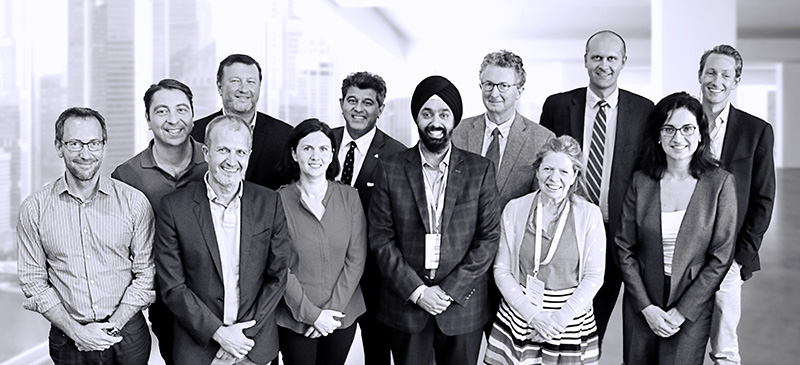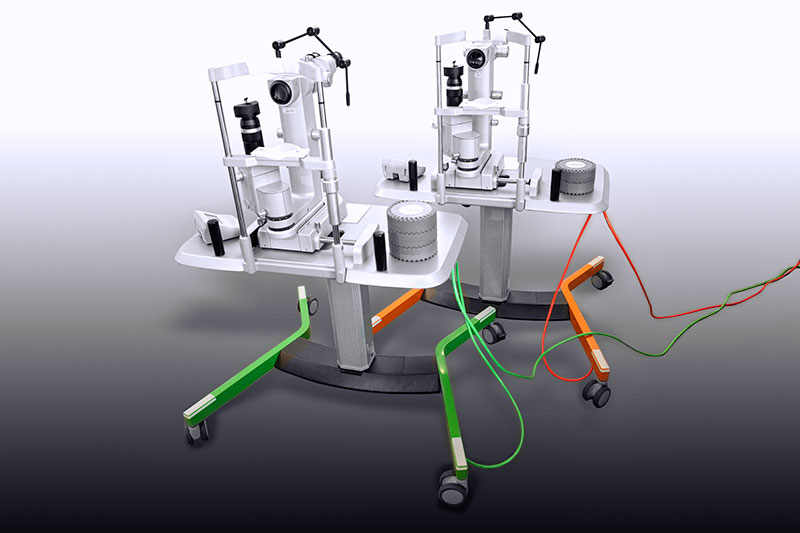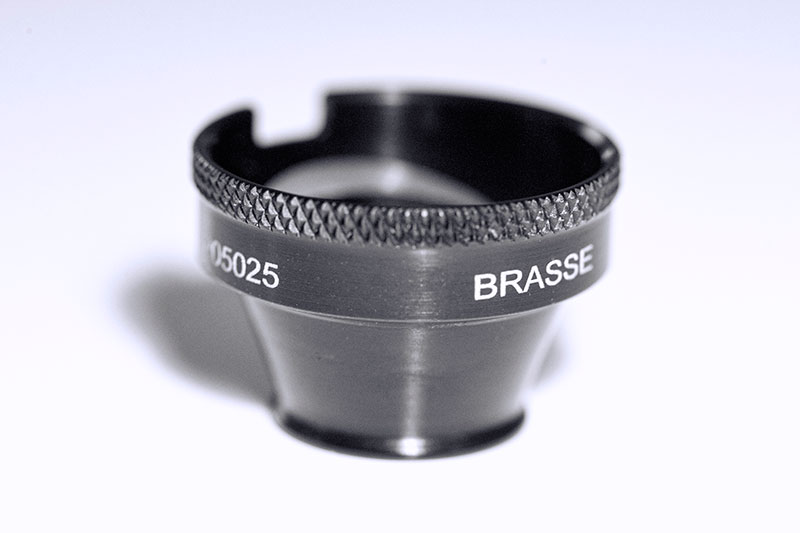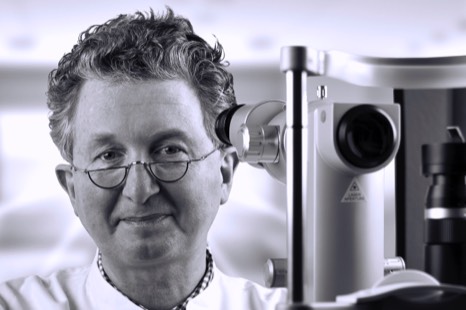Dear patients,
the past years have been an incredibly busy time for me with regard to vitreolysis treatment.
I was surprised to find that my website was last updated more than two years ago. I would like to catch up now.
For almost 9 years now, my main interest in the ophthalmology field has been focussed on the subject of YAG floaters vitreolysis, and I spend more than half of my working hours on this subject.
Fortunately two new ophthalmologists who provide a great deal of support in my regular ophthalmology tasks have joined our practice network. However, I will personally and exclusively perform the floater laser treatment in future as well.
the past years have been an incredibly busy time for me with regard to vitreolysis treatment.
I was surprised to find that my website was last updated more than two years ago. I would like to catch up now.
For almost 9 years now, my main interest in the ophthalmology field has been focussed on the subject of YAG floaters vitreolysis, and I spend more than half of my working hours on this subject.
Fortunately two new ophthalmologists who provide a great deal of support in my regular ophthalmology tasks have joined our practice network. However, I will personally and exclusively perform the floater laser treatment in future as well.

From left to right: Dr. Brasse, Dr. M. Rählmann, Dr. L. Krabbe und drs. E. Feldmann
Currently already 1,986 patients have visited my practice to receive the YAG laser vitreolysis treatment, some having a very long journey to get here. As far as I know, this is the highest number of cases treated in Germany up to now. The satisfaction rate is very high. Except for occasional temporarily increased intraocular pressure, we have not experienced any complications in my practice so far. However, this is only possible by investing a considerable amount of time and technology. Approximately 4-5 hours spent on diagnostics and therapy is common. Therefore we are not always able to offer you your desired appointment right away, but we are doing our best to accommodate you.
The publications and my activities as a lecturer also take up additional time. However these functions are indispensable for the further development of the procedure. We founded the IOFS - International Ophthalmic Floater Society at the ESCRS Meeting in Copenhagen 2016.
The publications and my activities as a lecturer also take up additional time. However these functions are indispensable for the further development of the procedure. We founded the IOFS - International Ophthalmic Floater Society at the ESCRS Meeting in Copenhagen 2016.

It has been designed to serve as a platform for international information exchange to further develop YAG laser vitreolysis. In collaboration with Prof. M.J. Tassignon of the university clinic in Antwerp, I have accepted the responsibility for the assignment and classification of vitreous floaters. We are attempting to sort the diverse floaters appropriately by means of a histological and anatomical approach. Floater classification table
Since there are very many different variants of floaters, it is of the greatest significance to establish an initial classification for the indication of eye laser therapy. The prognosis of the therapy is dependent on this. Not every floater suitable for a laser procedure. In addition, the position within the eye is also a factor. If it is too close to the retina or the lens, laser treatment may be difficult.
At the beginning of 2016, for testing purposes Ellex provided Dr. Paul Singh / USA and me with a new prototype YAG laser with a green target beam. We were both immediately enthused with the innovation. Particularly for younger patients and patients with myopia/near-sightedness the green target laser beam system allows a more accurate aim.
Since there are very many different variants of floaters, it is of the greatest significance to establish an initial classification for the indication of eye laser therapy. The prognosis of the therapy is dependent on this. Not every floater suitable for a laser procedure. In addition, the position within the eye is also a factor. If it is too close to the retina or the lens, laser treatment may be difficult.
At the beginning of 2016, for testing purposes Ellex provided Dr. Paul Singh / USA and me with a new prototype YAG laser with a green target beam. We were both immediately enthused with the innovation. Particularly for younger patients and patients with myopia/near-sightedness the green target laser beam system allows a more accurate aim.
I therefore did not hesitate to invest in a second laser system when the laser was introduced on the market in 2017, despite the cost. I have had my own contribution to the improvement of the system produced by a vehicle construction manufacturer in Münsterland. These frames have a greater radius and weigh 10 kilogrammes more than the originals. This provides significantly improved laser stability and increases the safety factor.

However, it is not only the development of the laser technology, but also the improvement of the contact lenses which are placed on the eye’s surface during the treatment. Only these contact lenses provide access to the internal area of the eye.
The Ocular Instruments company https://www.ocularinc.com was kind enough to provide me with a great deal of support during the development of a new contact lens. There is a prism integrated in this lens. This allows the treatment of floaters in the vitreous body which cannot be reached with the traditional lenses.
The Ocular Instruments company https://www.ocularinc.com was kind enough to provide me with a great deal of support during the development of a new contact lens. There is a prism integrated in this lens. This allows the treatment of floaters in the vitreous body which cannot be reached with the traditional lenses.

5 years ago only a few ophthalmologists explored the subject of vitreolysis; today the subject has already sparked the interest of multiple university clinics in Germany. The treatments have now been introduced at the largest university clinic in the Netherlands, “Het Oogziekenhuis Rotterdam”. As you can see in the News section, I have accepted invitations by specialist organizations such as NOG und ÖOG (Netherland’s and Austria’s Society of Ophthalmology) to hold lectures. DOC Nuremburg http://www.doc-nuernberg.de/ has approached me to organize a 90-minute course addressing the YAG laser vitreolysis topic. This is the official introduction of this subject to the largest congress for ophthalmological surgery in the German-speaking regions.
In retrospect, this is a wonderful development I have had the honour to support during the past years. We have already been able to able to help numerous patients. But we have yet to reach our goal. Many improvements are still pending, especially to benefit the patients we have not been able to help up to now. This includes new approaches, such as atropine treatment to reduce the awareness of floaters. The university clinic in Rostock is working on a therapy approach to increase the awareness threshold of obstructive floaters by means of behavioural therapy. Unfortunately the statutory healthcare system does not subsidize these endeavours to research further treatment options. Retrospectively this has also applied to other diseases. Treating cataracts with phacoemulsification was frowned upon initially in professional circles. Today it is one of the most frequently performed interventions worldwide.
My colleagues and I will continue to work on this type of development with great diligence.
Kind regards
Yours truly
Dr. med. Karl Brasse MRCOphth
In retrospect, this is a wonderful development I have had the honour to support during the past years. We have already been able to able to help numerous patients. But we have yet to reach our goal. Many improvements are still pending, especially to benefit the patients we have not been able to help up to now. This includes new approaches, such as atropine treatment to reduce the awareness of floaters. The university clinic in Rostock is working on a therapy approach to increase the awareness threshold of obstructive floaters by means of behavioural therapy. Unfortunately the statutory healthcare system does not subsidize these endeavours to research further treatment options. Retrospectively this has also applied to other diseases. Treating cataracts with phacoemulsification was frowned upon initially in professional circles. Today it is one of the most frequently performed interventions worldwide.
My colleagues and I will continue to work on this type of development with great diligence.
Kind regards
Yours truly
Dr. med. Karl Brasse MRCOphth




